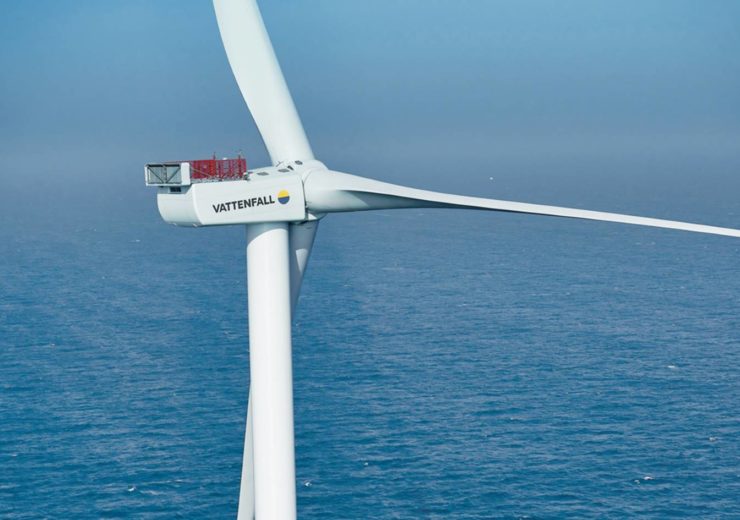Hollandse Kust Zuid III and IV wind farms form part of 1.5GW Hollandse Kust Zuid Wind Farm Zone located in the North Sea

The offshore grid connection agreement marks a key milestone for the wind project. (Credit: Vattenfall AB)
Swedish energy company Vattenfall and transmission system operator (TSO) TenneT have signed an agreement for the construction of offshore grid connection for the 760MW Dutch offshore wind farms Hollandse Kust (Zuid) 3 and 4 to be located in the North Sea.
The wind farms form part of the 1.5GW Hollandse Kust Zuid Wind Farm Zone (HKZWFZ), an offshore wind farm complex being developed 22km away from the Dutch North Sea coast.
The wind complex also includes the 750MW Hollandse Kust Zuid wind farm sites (HKZWFS) 1 and 2 wind farms, for which Vattenfall signed grid connection agreement with TenneT in 2019.
Vattenfall offshore wind head Catrin Jung said: “This is an important milestone, and I’m pleased that the contracts could be signed so quickly – just nine months after winning the bid in July 2019.
“We’re looking forward to work with TenneT on Hollandse Kust Zuid 3 & 4. The combined wind farms of Hollandse Kust Zuid will be able to cover the total energy demand of between two and three million households, which makes it a major driving factor behind the transition to renewable energies in the Netherlands.”
Dutch wind complex to power three million homes
Turbines installation at Hollandse Kust Zuid is scheduled to commence in 2022 and the wind farm is planned for commissioning in 2023. Upon completion, the Dutch wind complex will have the capacity to power three million Dutch homes.
Grid connection work for the Hollandse Kust 1&2 wind farms is scheduled to start in 2021 followed by the work on the wind farms 3&4 in 2022.
TenneT offshore director Marco Kuijpers said: “The development of an offshore grid is well on track. Hollandse Kust Zuid is the second wind farm site to which we will be providing access in the form of two standardised AC connections of around 700 MW each.”
